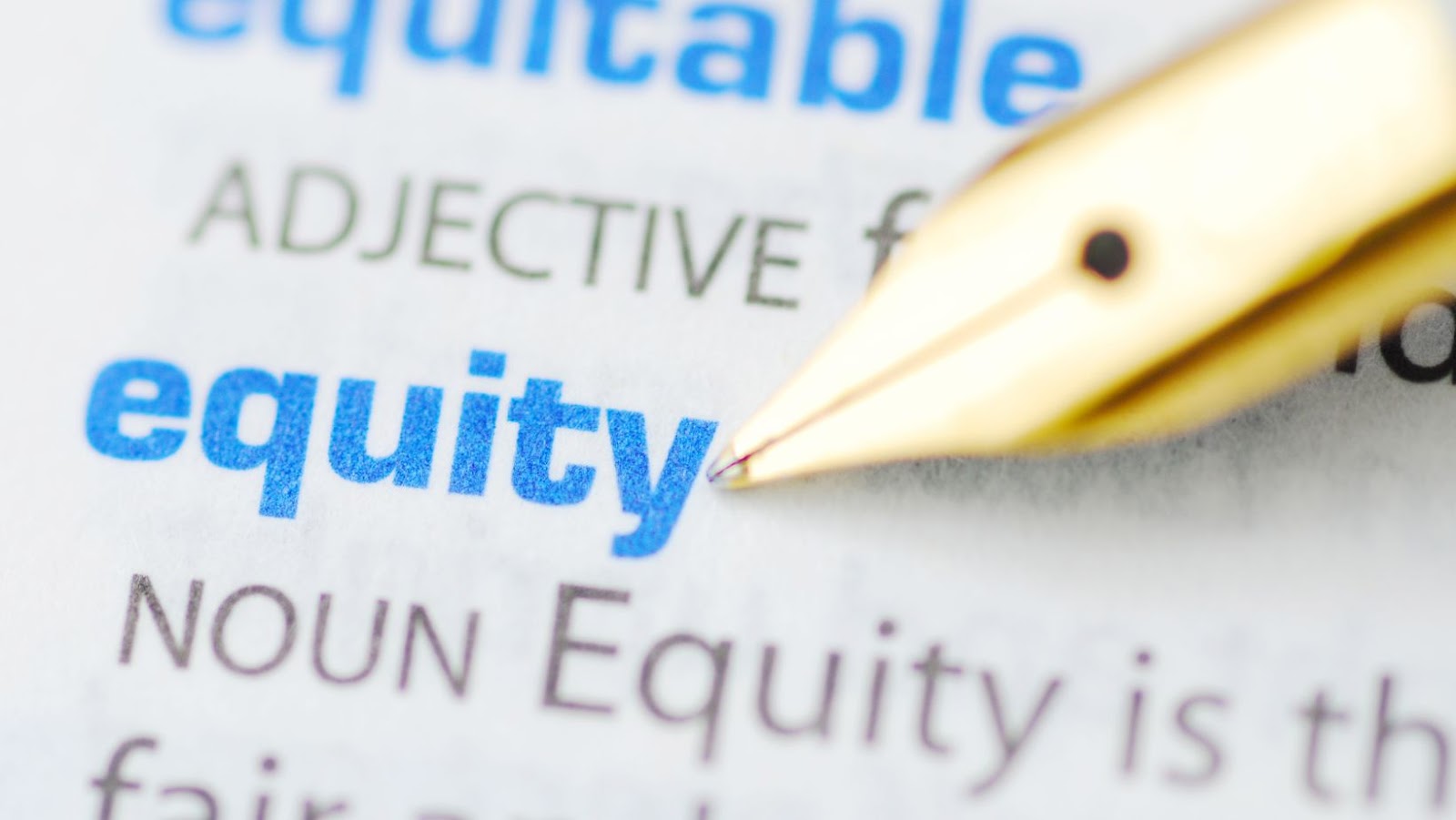
Private Equity is a form of alternative investment in which professional investors manage portfolios of investments. In the US, private equity has been used to aid in capital formation and facilitate the transfer of ownership from one investor to another.
This article provides a US Private Equity market overview and a breakdown of the different types of private equity investments available in the United States.
Definition of Private Equity
Private Equity (PE) is a type of investment in which a private company, usually an established business, receives capital from private investors seeking to achieve outstanding returns through long-term investments. PE firms typically invest in various industries and help build companies by providing strategic knowhow, making operational changes and helping expand businesses.
In the US, PE activity has increased with investment strategies ranging from venture capital to distressed debt. The size and scale of PE transactions is also increasing steadily. In addition to traditional transactions such as buyouts and venture capital, more specialized investments such as infrastructure or mezzanine financing have increased significantly in recent years. As PE firms increasingly seek out investments across various industries and asset classes, they are becoming an important source of growth capital for the US economy.
The total value of Private Equity (PE) investments in the U.S. stood at $246 billion for 2019 — representing steady growth over the past several years. The most active type of PE transaction was buyouts, accounting for around one third (32 percent) of all deals made during the year; followed by venture capital funding (29 percent); growth/expansion financing (20 percent); distressed debt financing (11 percent); mezzanine/bridge loans (5 percent); infrastructure/renewable energy investments (4 percent). Most activity unfolded on coasts with California leading with 13% share followed by New York State representing 12% market share overall.
Overview of the US PE Market
The US private equity (PE) market is the largest and most mature in the world, with a market size exceeding $2 trillion. As of 2018, an estimated 3,525 PE firms were operating in the US marketplace and investing in areas ranging from technology to petroleum, healthcare to consumer products.
An important part of understanding the US PE market is to understand how it breaks down by type. Broadly, there are four types of PE firms: venture capital funds, leveraged buyout (LBO) funds, growth equity funds, and special situations or distressed buyouts/turnaround investments.
Venture capital funds invest in early-stage companies and start-ups filled with potential yet still quite risky investments with limited track records. Usually these funds target risk-adjusted returns higher than those achievable through public markets or debt instruments.
LBOs involve buying other companies at relatively low prices and attempting to turn them around. To do this successfully LBO fund managers rely on leverage created by borrowed money and their capital to complete acquisitions – often relying heavily on debt as a source for doing so. These deals usually generate high returns for investors if successful since very large premia can be paid out after achieving various milestones or targets over timeframe during which continuous financial support and restructuring is provided.
Growth equity funds operate by taking minority positions in established companies with strong potential for expansion but are not yet prepared for IPOs or more established exit routes such as trade sales or secondary buyouts etc.. This market segment offers a less risky investment alternative compared to venture capital investments without sacrificing growth potential considerably since a high level of expertise is expected from these fund managers in identifying suitable targets early enough before they get too crowded out by larger players already present within the marketplace domain they operate within.
US Private Equity Market Size
The US private equity market has grown significantly and continues to be strong in recent years. In 2020, private equity firms in the US raised more than $196 billion in capital commitments, the most since 2006. This demonstrates a strong appetite for private equity investments, despite the ongoing COVID-19 pandemic.
This article will provide an overview of the US private equity market, including the size and scope of the market, the major players, and key trends.
Total Assets Under Management (AUM)
As of 2019, the US Private Equity (PE) Space held a total Assets Under Management (AUM) of $2.30 trillion, equating to greater than 45% of global PE industry AUM. This figure took a significant jump from 2013 when AUM was estimated to be $1.46 trillion, translating into a growth rate of close to 5% compounded annually during these 6 years.
This big jump in US PE AUM can be attributed mostly to the increase in the number of Buyouts funds since 2013 with Secondary and Venture Capital funds adding only modest contributions to the overall growth rate of AUM. Overall, Buyout funds accounts for 73% of total US PE Market size while Secondary and Venture Capital comprise approximately 13% and 14%, respectively. This can also be attributed to larger funds being raised due to an agglomeration effect where large managers garner more resources than smaller ones.
Furthermore, there have been higher deployments in newly created VC and Equity Opportunities Funds which have actively pushed up private equity market activities in recent times as institutions are increasingly looking at alternative strategies apart from traditional investments such as stocks and bonds due to expectations around higher returns on investments when compared with public markets. As a result, these new investment strategies are expected to further fuel US PE Market growth over the coming years and increase demand for co-investment opportunities, especially from institutions looking to achieve desirable returns through risk diversification through Higher GP/LP Allocations & Exposure Limits on Respective Investment Strategies.

Number of Funds
In the United States, private equity funds have become increasingly popular. According to a report from Bain and Company, the number of private equity funds in the US grew from around 12,000 in 2005 to 22,686 in 2019 (an increase of 89%). The number of firms managing these funds also increased from 1,356 in 2005 to 2,193 by 2019.
The total amount of capital US private equity firms raised has also continuously increased since 2005. In 2019 alone, US-based firms raised over $750 billion. Furthermore, according to a 2019 survey by PwC and Hamilton Lane, the intention to continue raising money is still strong – 56% of surveyed managers indicated their intention to launch new funds within 12 months.
The value size for each sector varies significantly: energy and technology were the two largest contributors with a combined capital of $118 billion followed by healthcare ($93 billion), industrial ($78 billion), financial services ($74 billion) and consumer products & retail ($71 billion).
Number of Deals
In the United States private equity market, the number of deals in 2019 totaled 7,313 transactions representing 1,047 funds and including $535bn across all stages of investing. Private equity deals reached their peak in 2017 at 8,143 transactions. Out of these transactions, venture capital deals accounted for 42%, buyouts accounted for 32%, and growth equity deals accounted for 24%.
The total number of corporate minority investments was 831 – representing 11% of the total private equity deals. The total value invested in corporate minority investments was $19b – representing 3.5% of the total value invested in all PE deals. Regarding positioning, recapitalization and restructuring deals account for the majority (47%) with buyouts and venture capital trailing behind respectively at 25% and 21%.
Regarding sizing and deal type concentration by fund size breakdown, mid-market / lower mid-market funds have a slight edge with 61% compared to 54% from large cap funds, 25% from small cap funds and 10% from corporate funds/sponsors. Of those, 81% being buyouts – adding to a current market contribution of about 15 percent by large cap acquisitions versus 40 percent by mid-market /lower mid-market acquisitions.
The average size between a venture capital transaction is $4m compared to the average size for a buyout deal is $41m or 10x higher than VC on average; this ratio rises steadily as we increase fund sizes but much reduced when compared to larger cap gains. Fund sizes are heavily concentrated towards deal sizes under $80m (65%), with 35+deals within that smaller sweet spot – accounting for approximately 30%.

US PE Breakdown
Private equity (PE) investments in the US have grown considerably recently. According to PitchBook data, investments from PE firms in the US hit an all-time high of $1.36 trillion in 2018.
This article will overview US private equity investment activity, breaking the market into its sectors and individual deals.
Breakdown by Industry
Private equity (PE) investment activity in the United States continues to remain at a healthy level. The US PE market saw an increase of 2.9 percent in investment activity in 2016, reaching USD425.8 billion invested by PE firms compared to USD413.6 billion in 2015. A breakdown of total investments by industry offers insight into the trends shaping this ever-evolving market.
Most private equity investment activity can be categorized into six major industries: Technology, Healthcare and Life Sciences, Consumer and Retail, Industrials, Financial Services and Real Estate. In 2016, Technology was the biggest recipient of PE capital with 36 percent of total investments going towards this sector compared to 30 percent in 2015 – an increase of 6 percent yearly. Healthcare & Life Sciences took second place with 22 percent share; followed by Consumer & Retail (17%), Industrials (15%), Financial Services (8%) and Real Estate (3%).
Breakdown by Region
When examining private equity financial activities within the United States, breaking the market down by region is best. By doing so, we can better understand investment activity levels and particular sectors with significant investments.
Most private equity activity centers around New York, California, Massachusetts and Texas — accounting for 80% of all private equity deals nationally; these states usually add up to more than 50% of total investments across the US. Other notable markets include Chicago, the southeast, and Washington D.C., where markets are slowly emerging.
The following regions are most active in terms of private equity investment activity:
- Northeast (mainly New York)
- West Coast (principally California)
- Southeast (includes mostly Florida & Georgia)
- Midwest (centered around Chicago & Minnesota)
- Southwest (mainly Texas)
In terms of sector focus within each region many tend to favor both technology & healthcare and traditional companies like industrial; however certain sections programatically exclude certain industries from their pursuit base such as banking & gambling related businesses.
Breakdown by Size of Deals
Many deal sizes characterize the US Private Equity market. For example, private equity investors may pursue larger deals for established companies, or smaller investments in early-stage businesses. Regarding deal size, the median US private equity deal was $120M in 2019.
The breakdown of deals by size shows that larger deals account for most of the US private equity market. For example, deals valued at $500M or more accounted for 31 percent of the total in 2019, while mega-deals were even more significant; they alone accounted for 25 percent of all transactions.
At the other end of the spectrum, deals valued at less than $20M represented just 7 percent of all private equity activity in 2019. Of these smaller investment vehicles, angel and seed rounds accounted for 3 percent and 2 percent respectively, while micro-value investments comprised 2%. However, this segment has grown rapidly over recent years – nearly 80% since 2017 – suggesting an expansion into long-term growth strategies in local markets across the United States.

US Private Equity Exits
Private equity exits are the final step in the life cycle of a deal. They typically mark the culmination of the effort of a private equity sponsor to realize a return on their investment.
The US private equity market has two common exit options – an Initial Public Offering (IPO) or a sale to another company.
This article will explore the exit strategies available to private equity sponsors in the US market.
Breakdown by Type of Exit
The US private equity secondary market is continuing to mature as investments in private companies become increasingly attractive to investors. As such, the methods by which sponsors may exit or realize investment returns continue evolving. PE exits are categorized into three types: mergers and acquisitions (M&A), initial public offerings (IPO), and dividend recaps/refinancing. Depending upon the size of the transaction, available buyer pool, deal structure, industry outlook and more, sponsors may select from various tools to achieve the most successful outcomes for both themselves and their investors.
Mergers and Acquisitions (M&A): Mergers and Acquisitions have historically been the most common type of PE exits in the US with a large portion of resulting proceeds from strategic buyers. Strategic buyers are generally considered industry buyers that purchase a controlling stake in an operating company with assets they can integrate into their operations via accretive arrangements or operational synergies. Examples include tech players utilizing artificial intelligence or manufacturers entering new product markets via an acquisition. As such M&A’s can be seen as profit-enhancing transactions that provide value-added strategic insights applicable across deals within a single sector and diversified over multiple industries/sectors.
Initial Public Offerings (IPO): A growing number of PE firms are now exploring Initial Public Offerings (IPO)as an exit strategy primarily due to higher valuations achievable compared to previous historical norms coupled with arguably greater control preserved- especially when compared to M&As where terms offered by potential buyers will influence deal outcome more so than IPOs where valuation is more controlled by the sponsor/issuer itself. Although IPOs remain significantly small relative to their M&A counterparts in terms of value captured on exits for private equity investments, eCommerce driven technology platforms have demonstrably benefited from recent market investment trends allowing for — even better — pricing outcomes for issuers and permits PE operators greater flexibility when seeking pursue exit opportunities since market conditions frequently dictate success or failure much more than buyer appetite which drives nearly 70% of returns generated from M&A exiting strategies respectively.
Dividend Recaps/Refinancings: With the aim of realizing some return while maintaining control over assets at hand similar merger situations minus identifiable strategic partners, PE investors continue seasonally exploration further leveraging investments via dividend recaps or refinancing activities often involving debt financing entities willing to commit capital based upon existing fundamentals within portfolio companies underlying business models despite varying levels risk-metrics associated therewith depending upon either custom loan repayment arrangements negotiated or broad investment metrics governing existing corporate debt facilities underlying Borrower entities risk appetites thereof once investors introduce plus elements thereto accordingly reward participation within established mutually agreed primary capital markets constructions designed thereby capturing commensurate overall net return expectations pertaining to afore referenced targeted exit goals sought by Sponsor entities alike necessarily confirming transactional bench marks according proscribed guidelines laid out thereunder increasing sustained return para meters accepted industry wide simultaneously satisfying related secondary financial objectives formally presented alongside focusing similarly accentuated recurring post loan period agreements laid main purpose being enhanced ongoing perfor mance criteria calibrated against predetermined key performance indicators serving dual purposes including but not limited thereof definitive measurable criteria attainments mentioned above collectively respective towards achieving stated financial return goals defined herein whereby proudly participated not only special rights preferences thereto contractually granted hereunder but enjoy added enhance ments beneficial both par ties convening thereafter under auspicious favorable circumstances hopefully unanticipated operational phase alteration unforeseen circumstances necessitating proactive dealings regarding specialized services usually rendered highly knowledgeable educated experienced experts able whatever extent circumstances demand provide speedy resolution matter hand insuring optimal results obtained favor all stakeholders concerned regardless particular contractual structures employed transactionally dispose proceedings respective interests pertinent involved parties joint forces coverage deliver satisfactory predetermined efficient timescale required obtain primary target focus objective satisfactory all involved concerned henceforth confidently resolved finally.
Breakdown by Industry
Regarding industry, the US private equity exit landscape shows that the tech sector was the most active in 2019, accounting for 37.1% of exits, followed by healthcare and consumer products & services, each making up 15.2% of exits in total. The remaining 32.5% were spread across seven other industries including automotive & transportation at 5.6%, business & education services at 3.2%, media/communications/entertainment at 11.3%, and industrial goods/energy/utilities at 1%.
The consumer products & services sector was dominated by retail (35%) leading the way among consumer product and services companies with apparel (24%), prepared food (23%), consumer goods (17%), home furnishings (9%) and hospitality (2%) just behind it. On the other hand, healthcare featured a variety of sub sectors such as software & health tech tools at 57%, local health care providers at 25%, pharmaceuticals & biologics at 7%, etc. as major contributors to its exit landscape, with biopharmaceuticals commanding particular attention due to five 10+ billion-dollar deals within this sector alone in 2019, namely Bristol-Myers Squibb’s $74 billion exit to Celgene Corp., Johnson& Johnson’s $30 billion exit to Actelion Ltd., AbbVie Inc’s $21 billion acquisition of Allergan Plc., Express Scripts Holding Co’s $11billion sale to Cigna Corp., and Amgen Inc’s acquisition of Celgene Corp for $13 billion.
Breakdown by Region
The United States is the largest private equity markets in the world and had an estimated asset size of approximately $3 trillion at the end of 2018. The presence of major private equity firms in different parts of the country is one factor that drives investment activity. This article examines the geographic breakdown of US private equity exits by region and industry in 2018/2019.
According to Pitchbook’s Exits Report 2019, activity by US-based PE firms was liable for $717 billion in gross proceeds from exits globally, representing an increase of 11% from 2017 levels. By region, activities were mainly concentrated across three areas – North America ($582B or 81%), Western Europe ($73B or 10%) and Asia Pacific ($53B or 7%) – with a relatively minor dependence on other regions such as Africa & Middle East (2%).
In terms of industry specific distribution, technology-focused investments led the charge at $195 billion globally (exceeding 20% total), followed by healthcare ($175B), industrials & chemicals ($136B) and consumer discretionary & retail investments totaling more than $100 billion each.
By geography, North America remained a major center for exits as it claimed more than 85% share over exit proceeds among developed regions – accounted primarily to strong performances from Technology related deals. In contrast, Western Europe investments took 22% share (4th biggest market by region), predominantly driven by exits within Retail & Consumer Discretionary sectorsThere was also increasing interest in Asia Pacific driven mainly towards Technology centric deals but still accounted for less than 10% (%) share overall within its industry mix.
Conclusion
In conclusion, the US private equity market is an important and growing asset class, with various strategies and increased activity due to the coronavirus pandemic. Although overall demand for private equity deals remains relatively high compared to pre-pandemic levels, fundraising and deal activity is concentrated in certain segments of the market such as consumer & retail, healthcare & life sciences and technology.
The future of the US PE market is uncertain; however, it appears that levels of investor interest will remain high across all strategies as investors seek attractive returns in a low-yield environment. Additionally, digitalization within the industry will continue to pose opportunities and challenges as new technologies enable more efficient processes and challenge existing firms’ market positions.
tags = US, PE Breakdown, acroeconomic environment, technology investments, PE firms, pitchbook us 93b december 52b streetjournal, pitchbook us 52b 30bbrown wall streetjournal, dry powder, Stout, West Monroe, Twin Brook Capital Partners and Ontra












